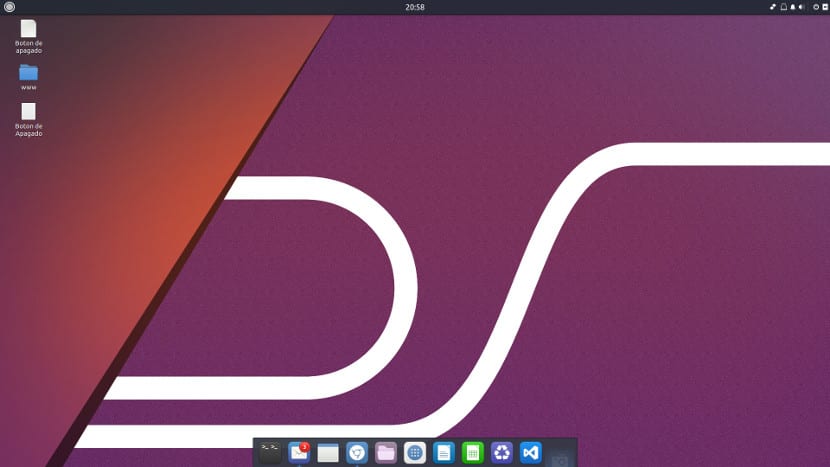
More and more Ubuntu users are using a dock to keep all their things "at hand", leaving aside the famous desktop shortcuts. Its popularity reaches such an extent that Ubuntu Budgie, the new flavor of Ubuntu, uses Plank as a distribution dock.
But still, there are some programs and applications that we cannot have in the dock, as is the case with the off button. The last program that we use on our computer before turning it off can be easily stored in the dock. We tell you how to do it.
Plank is the Ubuntu Budgie dock but it doesn't allow you to put the traditional shutdown button
The most famous and lightest dock of all, Plank does not allow inserting the shutdown button application but it does support any application or shortcut. The same happens also in other docks that do not allow inserting this type of application, but do have an option in their configuration to put it. Taking advantage of this situation of admission of shortcuts and applications, we are going to use it to insert the off button in Plank. So we open gedit or any other code editor and write the following:
[Desktop Entry] Version=x.y Name=Boton de Apagado Comment=Aceso directo del boton de apagado Exec=/sbin/shutdown -Ph now Icon=/usr/share/icons/Humanity/places/16/folder_home.svg Terminal=false Type=Application Categories=Utility;Application;
After writing this on a blank document, We will save this document with the name "button-off.desktop" and we will save it on our Desktop. This will create a shortcut to the Ubuntu shutdown program. And it will be this shortcut which we will move to our Plank dock. Now, once we have it in the dock, we must be careful since a slight click on the icon by mistake and it will turn off our computer without us being able to do anything to remedy it. Something to keep in mind.
thanks for your help. You know I see that lately people leave very little comment, so that there is a feedback between the person who writes the blog and the visitor, the blogger does not know if the help worked or what? But with this social network, almost everyone asks directly there (on social networks) without even reading a tutorial, it seems that they want the answer immediately. and if this continues it seems to me that people will have little desire to continue doing tutorials. good is my opinion greetings and thank you very much